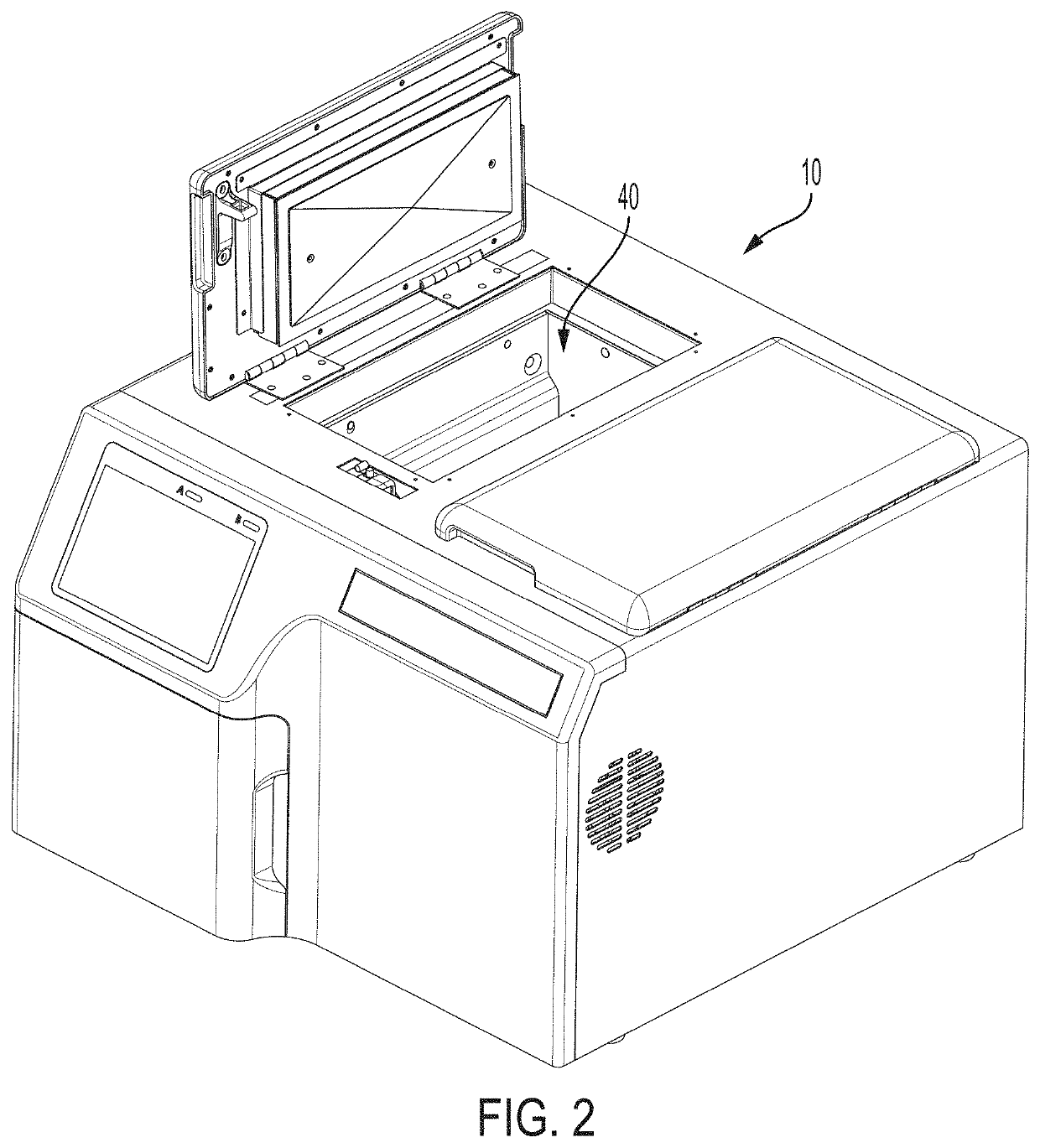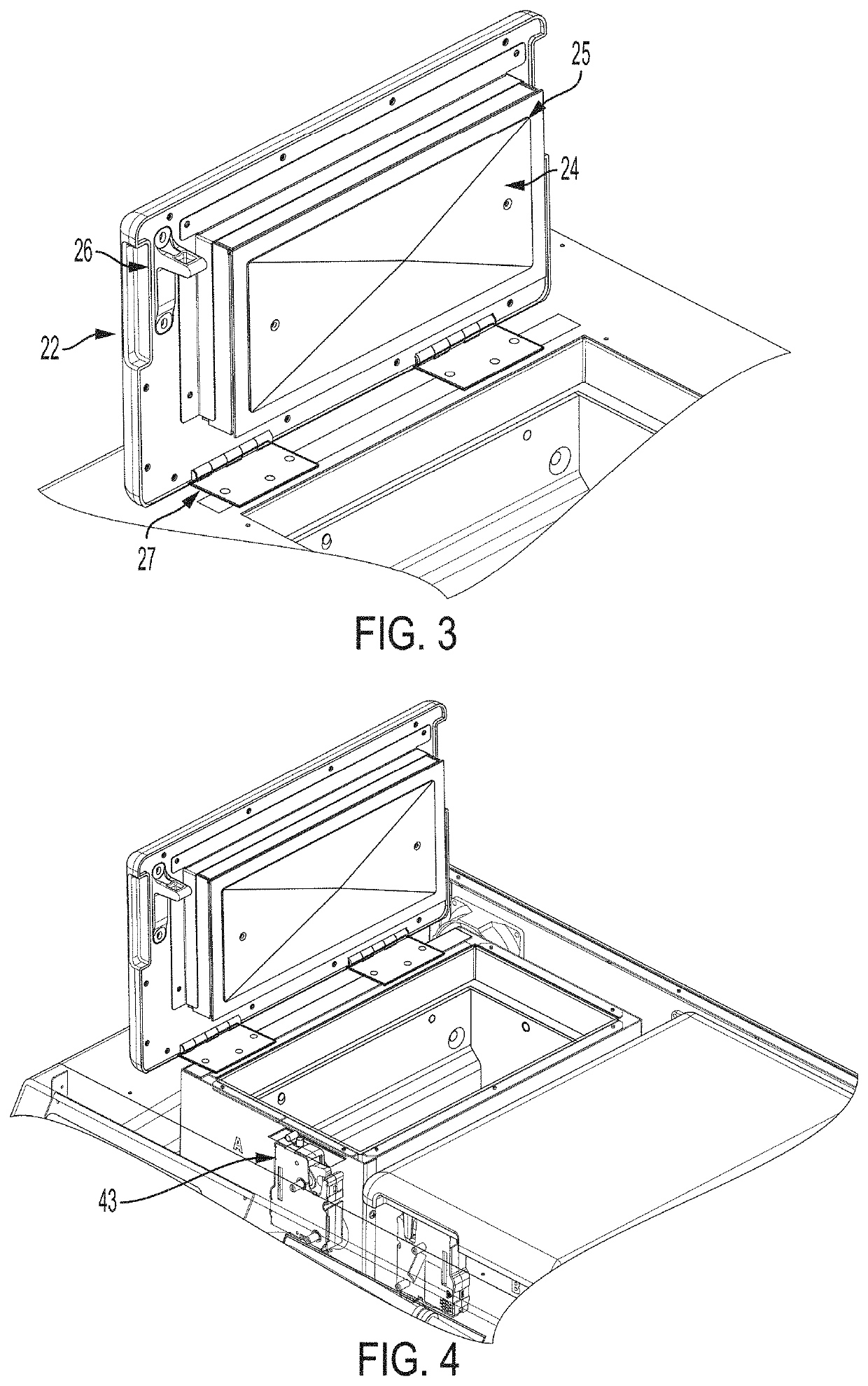Self-Contained Fully Automated Non-Incinerating Medical Waste Treatment Device
- Summary
- Abstract
- Description
- Claims
- Application Information
AI Technical Summary
Benefits of technology
Problems solved by technology
Method used
Image
Examples
example 1
Method of Use of the Medical Waste Device
[0066]The self-contained fully automated non-incinerating medical waste treatment device comprising two chambers is conveniently located on a countertop or cart in a room or space for the safe disposal of generated medical waste (e.g., sharps or red-bag waste). The device is capable of processing up to 10 gallons of medical waste in a day using both chambers (double batch).
[0067]Containers for receipt of the medical waste are placed in each of the receiving chambers of the device.
[0068]Containers may be specific for containing only red bag medical waste or sharp medical waste. The containers receive the medical waste outside of the medical waste device.
[0069]The user activates the device by a simple key entry sequence.
[0070]The activated device initiates a process in which the closure lid to the chamber containing the container is latched and locked down and a heating cycle is initiated in the chamber to heat the chamber to a predetermined ta...
example 2
Medical Waste Device Sterilization Test
[0079]Medical waste collection containers were configured to separately evaluate a sharp biohazardous load and a red bag biohazardous waste load. These loads were contaminated with a battery of microorganisms, processed through the device decontamination cycles, and evaluated for efficacy. Water emissions from the loads were also evaluated.
[0080]The following tests for the efficacy of the medical waste device follow concepts, requirements, and guidance outlined in ISO 11138-1, ISO 11138-3, ISO 11138-4, ISO 20857, ISO 17665-1, and ISO 14937.
[0081]Sharps Load Configuration: Approximately 370 g of syringes (multiple sizes) with cannulas attached and a small quantity of water (25-50 mL).
[0082]Red Bag Load Configuration: Approximately 170 g of absorbent material moistened with a mixture of 50-100 mL of water and 5 mL of defibrinated blood test soil.
[0083]Test Organisms: Staphylococcus aureus, Pseudomonas aeruginosa, Candida albicans, Aspergillus bra...
example 3
Medical Waste Device Virucidal Test
[0099]The following virucidal effectiveness test of the medical waste device was conducted against the Human Corona Virus (H. Coy).
Test Conditions
[0100]Number of cycles: 1[0101]Test Temperature: 350° F.[0102]Contact Time: 90-minute[0103]Organic Load: 5% FBS (fetal bovine serum) in the inoculum[0104]Organic Load: 10% FBS in medical waste
Equipment and Reagents
[0105]Host cell growth medium: MEM with 10% FBS, lx PIS[0106]Dilution medium: MEM with 5% FBS[0107]Recovery host cell: MRC-5 ATCC CCL-171[0108]Host cell incubation: 37±1° C., 5% CO2, 90% RH (relative humidity)[0109]Virus incubation in host cells: 34±1° C., 5% CO2, 90% RH[0110]Virus: Human Coronal Virus 229E, ATCC VR-740[0111]96-wll plates[0112]Biosafety cabinet[0113]Humidified incubation[0114]Microscope
Method
Cell Culture Preparation
[0115]Prepared multiple cultures of MRC-5 cells, in serum-supplemented Minimum Essential Medium Eagle, 1X.
[0116]Incubated cultures at 37±1° C. for not less than 24 ho...
PUM
 Login to view more
Login to view more Abstract
Description
Claims
Application Information
 Login to view more
Login to view more - R&D Engineer
- R&D Manager
- IP Professional
- Industry Leading Data Capabilities
- Powerful AI technology
- Patent DNA Extraction
Browse by: Latest US Patents, China's latest patents, Technical Efficacy Thesaurus, Application Domain, Technology Topic.
© 2024 PatSnap. All rights reserved.Legal|Privacy policy|Modern Slavery Act Transparency Statement|Sitemap



